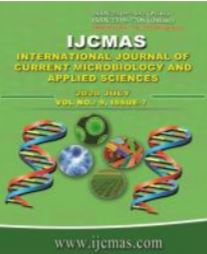


 National Academy of Agricultural Sciences (NAAS)
National Academy of Agricultural Sciences (NAAS)

|
PRINT ISSN : 2319-7692
Online ISSN : 2319-7706 Issues : 12 per year Publisher : Excellent Publishers Email : editorijcmas@gmail.com / submit@ijcmas.com Editor-in-chief: Dr.M.Prakash Index Copernicus ICV 2018: 95.39 NAAS RATING 2020: 5.38 |
Hemotropic mycoplasmas in dogs, such as Mycoplasma haemocanis, have been described worldwide. Little data are available on the prevalence of haemoplasma infections in dogs of India. The objective of the study was to investigate the prevalence, hematological changes and risk factors of canine haemoplasmosis in Kannur district of Kerala where tick vectors are highly prevalent. To address this, dogs (N= 1,235) with tick infestation were studied during the period from November 2019 to June 2020. Microscopic blood smear examination was used to establish the prevalence and primary screening of canine haemoplasmosis. Thirty four dogs (2.75%) were positive for Mycoplasma organisms, of this 25 animals (74%) were found to be co-infected by Babesia gibsoni. Hematological analysis revealed that co-infection of dogs with Mycoplasma spp. and B. gibsoni had exacerbated the anemic status of the animal. It was also found that the host risk factors like age, breed and gender of dogs had insignificance in occurrence of Mycoplasma infection. The results from the present study reinforced the notion that canine haemotrophic Mycoplasma as a potential pathogen causing anemia in susceptible animals. Besides, co-infection with other blood parasites would complicate the anemic crisis and complicate diagnosis. The study further demands molecular investigation into the situation to probe the exact prevalence and epidemiology of the disease for exploiting effective control measures.
 |
 |
 |
 |
 |